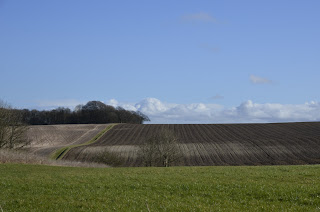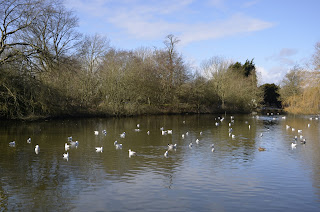Experimental Photographs
The task was to shoot a series of compositional exercises and explore the depth of field and shutter speed in the context of a rural environment. These photographs consists of many compositions such as the Golden Ratio, Rules of Third, Leading Lines and Depth of Field.
The field trip made me realise that we don't appreciate nature enough and that technology has taken our life away from reality. We are trapped in a hyperreality realm were we are consumed by social media and are so intrigued in constructing our fake identities that we actually forget to take a minute and 'look' at what reality looks like. We forget to observe and enjoy our surroundings, our creativity and vision is being blighted by technology.
Edited Photographs
All these photographs have been edited on Adobe Photoshop. In this particular photograph, I have simply inverted the photograph to a grayscale effect whilst increasing the exposure, decreasing the gamma correction and increasing the offset. Furthermore, whilst using the Curves, I have darken the contrast to give this photograph a gloomy, mystery atmosphere, as well as increasing the brightness and contrast slightly.I have edited this photograph by increasing the exposure and offset whilst decreasing the gamma correction. Moreover, I also decreased the brightness and increased the contrast to create a kaleidoscopic effect in this photograph. The reflection in the water helps to establish the golden ratio composition in this photograph which is really effective.
This photograph was edited by simply adding a burst of exposure, gamma correction and offset. In addition, i also increased the brightness and contrast to bring out the texture and detail in this photograph. The shadows and highlights have been increased which compliments the contrast of the photograph.
Firstly, I edited this photograph by changing the effect to grayscale. Using the depth of field to my advantage, I used the HDR Toning to increase the exposure and offset whilst decreasing the gamma correction. Moreover, I decided to add blur to this photograph to create a myopia, blind effect so I decreased the detail as well as increasing the shadows and highlights.
This effect complimented the vision behind this photograph significantly due to the mystery, gloomy essence it depicts. I changed the effect to grayscale, knowing that black and white works well with graveyard settings. Furthermore, I decreased the exposure and offset whilst increasing the gamma correction. I also decreasing the brightness and increased the contrast to create a dark atmosphere
After reading Stuart Hall's "The Spectacle of Others" (1997) I decided to reflect upon his ideology about positive and negative images and replicate a photograph by David A. Bailey which was displayed in this reading. I edited this photograph by inverting the threshold and developing the level to 128%. This photograph reminds me of developing photographs in darkrooms.
Stuart Hall's "The Spectacle of Others" (1997) summarises the debate about equality and difference in race and ethnicity. In his positive and negative image chapter, Hall states:
"the attempt to substitute a range of 'positive' images of black people, black life and culture for the 'negative' imagery which continues to dominate popular representation. This approach has the advantage of righting the balance. It is underpinned by an acceptance - indeed, a celebration - of difference. It inverts the binary opposition, privileging the subordinate term, sometimes reading the negative positively: 'Black is Beautiful'. It tries to construct a positive identification with what has been objected."
Although Hall's ideologies doesn't link to the task, I have decided to interconnect my photographs into his ideologies, such as the inverted black and white photograph above. In terms of photography whilst excluding race, I believe Hall is trying to interpret that everyone see's the colour 'white' as the first option or being the light that everyone goes to, however, the colour black can also be seen as a positive colour. It may objectify dark, negative energy but it gives a sense of life which can be constructed into something beautiful. In relation to my photographs, I believe that sometimes you need darkness to find the right balance, rather than having everything white and positive. There would be no reality or truth if there wasn't darkness in our life.
Alan Sailer
Alan Sailer is a high speed photography who uses fast shutter speed as a technique to capture objects breaking instantly. This use of fast shutter speed is really effective as he is able to capture the instant effect a breaking object has which is fascinating. This could be an interesting idea for my project.










































No comments:
Post a Comment